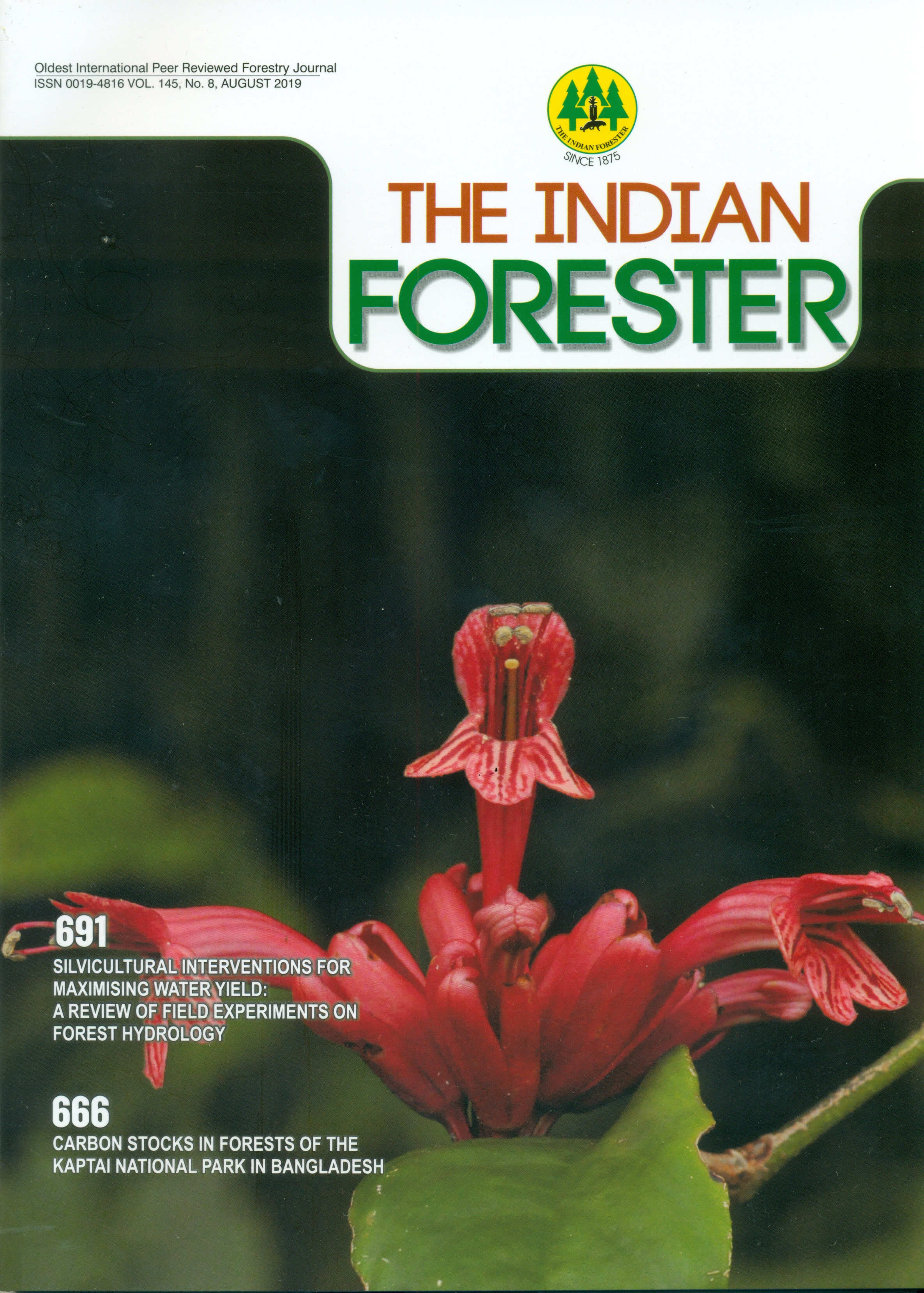Conservation vs. Development: A Case Study from Gangotri National Park, India
DOI:
https://doi.org/10.36808/if/2019/v145i8/147130Keywords:
Gangotri National Park, Conservation Policy, Livelihood, People's Perception.Abstract
The study was carried out around Gangotri National Park (GNP), India, to assess the impact of conservation policies on natural resource extraction from GNP. Different conservation policies within legal framework were analysed for identifying conflict zones and generate people's perception towards conservation policies. Local people have been banned from extracting any benefit from the park while tourists are allowed to use even the core zone. This has created a feeling of discrimination in the local community against the national park. Few people were of the opinion that with the creation of national park and development of tourism, the environment of the region has deteriorated. Very few people had knowledge about forest policies. Contact with each other has been found to be the most effective method that can be used in the study region for disseminating information related to policies. There is a need for developing policies and management actions that serve the economic interests of the local people together with achievement of environment conservation goal. This is essential to generate public support.References
Badola R., Bhardwaj A.K and Mukherijee S.K. (2000). Integrating Conservation Development in Protected Area ManagementCan we do it? Indian Forester, 126 (10):1054-1067.
Bernard H.R. (2000). Social Research Methods: Qualitative and Quantitative approaches, Sage New Delhi, India, 826pp.
Cernea M.M. (1989). User groups as producers in participatory afforestation strategies. World Bank discussion paper No.70, Washington, DC, 92pp.
Clay J. (1991). Cultural Survival and Conservation: Lessons from the past twenty years. In: Biodiversity: Culture, Conservation and Ecodevelopment (Eds. Oldfield M.L. and J.B. Alcorn), West view Press, Boulder, CO, 248-273pp.
Dasmann R.F. (1991). The importance of cultural and biological diversity. In: Biodiversity: Culture, Conservation and Eco-development (Oldfield M.L. and J.B. Alcorn Eds.) West view Press, Boulder, CO, 7-15pp.
Dwivedi A.P. (1993). Forests-the ecological ramifications. Nataraj Publications, Dehradun. India 326pp.
Green C. and Baden S. (1994). Gender issues and sanitation projects in Male. Briefing commissioned by the Japanese international co-operation agency Sussex: IDS, BRIDGE,26pp.
Kothari A. (1996). Is Joint Management of Protected Areas Desirable and Possible? In: People and Protected Areas: towards participatory conservation in India (Ashish Kothari, Neena Singh and Saloni Suri Eds.), Sage, New Delhi, India, 276 pp.
Lehmkuhl J.F., Upreti R.K. and Sharma U.R.(1988). National Parks and Local Development: Grasses and people in Royal Chitwan National Park, Nepal. Environmental Conservation, 15: 143-148.
Lynch O.J. (1992). Securing Community Based Tenurial Right in the Tropical Forests of Asia-an overview of current and prospective strategies. Issues in Development, World Resources Institute, Washington, 12pp.
Maikhuri R.K., Rao K.S., Nautiyal S. and Saxena K.G. (2004). Conservation Policy and Social conflicts in Protected Areas of the Indian Himalaya and options for conflict resolution: A Case Study from Nanda Devi Biosphere Reserve, Uttaranchal. Abstract- National seminar on resource appraisal, Technology application and environment challenges in central Himalaya, Department of Geography.
Mukherjee A. (2009). Conflict and co-existence in a National Park. Economic and Political Weekly, 44(23): 52-9.
Downloads
Downloads
Published
How to Cite
Issue
Section
License
Unless otherwise stated, copyright or similar rights in all materials presented on the site, including graphical images, are owned by Indian Forester.





